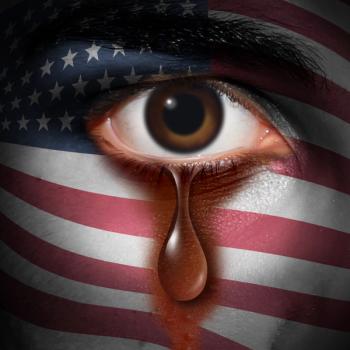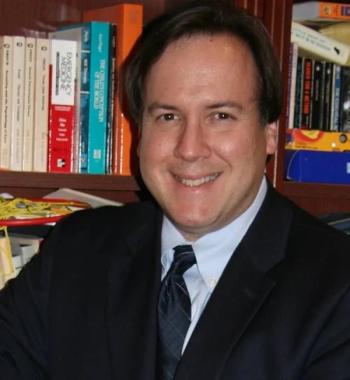
The Globalization of ADHD
Mental disorders have become a global commodity. According to the author, "a diagnostic fad heavily promoted first in the US has now quickly spread around the world."
[[{"type":"media","view_mode":"media_crop","fid":"30652","attributes":{"alt":"ADHD","class":"media-image","id":"media_crop_1296177988060","media_crop_h":"0","media_crop_image_style":"-1","media_crop_instance":"3218","media_crop_rotate":"0","media_crop_scale_h":"0","media_crop_scale_w":"0","media_crop_w":"0","media_crop_x":"0","media_crop_y":"0","style":"width: 149px; height: 210px;","title":" ","typeof":"foaf:Image"}}]]Mental disorders have become a global commodity. A diagnostic fad heavily promoted first in the US now quickly spreads around the world.
Multinational corporations have perfected the profitable art of international marketing. The reach of pharmaceutical companies (Pharma) stretches everywhere with a sales pitch easily translated into every language-“Sell the ill to sell the pill.”
The basic strategy is to expand the market by convincing the healthy that they are sick-that their expectable distress and imperfections are a mental disorder caused by a brain chemical imbalance that requires correction with an overpriced pill.
The very best customers are those who weren’t sick in the first place. Their sky high placebo response rate guarantees they will be very satisfied even with treatments that were not really necessary and may even be harmful. This explains how bleeding and purging were the go-to medical treatments for thousands of years, even though they did absolutely no good and instead caused lots of harm.
Once the adult market gets locked up, drug companies direct their marketing guile to recruiting ever younger kiddie customers and the old folks in nursing homes. And it isn’t satisfied until it has captured every possible customer in every possible country.
The US is by far the best market because it is big, rich, and the easiest to control and to monopolize. Only in the US has Pharma been able to bully and bribe politicians into allowing direct-to-consumer advertising and into disallowing price negotiation even with its biggest buyer (the government). The results in the US are massive over diagnosis and massive over treatment with medication. Sweet profits that make drug companies the most profitable of all industries, but bad for patients.
The pickings are less easy and less lucrative in the rest of the world-but still nothing to sneeze at.
I sought the perspective of Patrick Landman on the progressive globalization of ADHD. Dr Landman is a Parisian child psychiatrist who has just published the book
We must face the fact that some mental disorders are sold just like industrial or commercial products. Once the US market had become saturated, Pharma concentrated its efforts on developing new international markets that held more promise of promoting possible rapid growth.
It is no longer just medication that is marketed-now drug companies also market diseases. Psychiatry is particularly well suited to this strategy because the criteria for distinguishing between normality and pathology are not scientifically defined and because mental pathologies are multifaceted and somewhat arbitrary social constructs.
Attention Deficit Hyperactivity Disorder is a prime example. The US “market” already has 11% of children aged 7 to 17 diagnosed with ADHD and 6% on medication. Rates tripled in just 20 years and revenues increased 50 fold to almost $10 billion/yr. The US consumes almost 70% of the world’s anti-ADHD drugs. The growth of ADHD has been almost equally strong in Canada, Australia, and New Zealand but the rest of the world is there to be conquered.
Of course, the multinational pharmaceutical companies are not solely responsible for the expansion and globalization of ADHD. We must also include the ways in which information about ADHD can be spread worldwide thanks to internet access; the tests and checklists which enable self-diagnosis and the way self-diagnosis is marketed; the role of the service users and discussion forums; the change in thinking regarding what users demand; the pressure on children to succeed academically; and, lastly, the domination of DSM-IV and later DSM-5, which widened the ADHD definition compared to the one in the International Classification Of Diseases.
Faced with this globalization, we are bound to be interested in any small islands of resistance, and specifically in the French example. Until 2005, the prevalence of ADHD in France had long remained very low-around 1% to 2% compared to the 11% in the United States and more than 5% in the United Kingdom, the Scandinavian countries, and Spain.
The reasons for this French particularity are multiple and interconnected. First, French child psychiatry has been strongly marked by psychoanalysis and the psychopathological tradition, and there has been an ideological resistance to prescribing medication to children.
Secondly, there is a specific French classification of mental diseases based on the European clinical tradition, which does not associate hyperactivity with attention disorder. Many French child psychiatrists therefore see ADHD as a social construct “made in USA,” one that lacks validity and is based on a narrow biological reductionism.
Thirdly, for a long time the French education system was fairly tolerant of children’s behavioral problems.
Lastly, the power to prescribe psychostimulants to children was legally restricted to medical specialists and hospital psychiatrists.
Since the 2000s, many things have changed and the latest figures show that 3.5% of children have now been labeled with ADHD. France is definitely catching up. What are the factors behind this change?
First is the massive introduction of the DSM into psychiatric training and practice.
Second, media campaigns have discredited psychoanalysis and child psychiatry and favored neuropediatrics, whose neurodevelopmental hypotheses are supposedly more “up-to-date.” The exclusively bio-medical model has made significant inroads.
Third, society’s demand on psychiatry has also changed, and the focus is now on making the behavioral problems of the disruptive child disappear as quickly as possible.
Fourth and most important, drug companies are working hard to sell ADHD.
Fifth, the pressure from certain users associations for the recognition of ADHD as a qualification for disability rights.
And finally, the French education system is undergoing a major crisis-the struggle to integrate children of migrant origins who are often caught up in multiple social, cultural, linguistic and educational problems. More and more often, teachers have to deal with situations that seem to be out of their control; increasingly, they become the pre-diagnostic filters of “ADHD”-brokers of medical prescription. The effect is to turn school and societal problems into medical disorders in the individual child.
French child psychiatry is currently moving away from the exclusively psycho-social model of “brainless” psychiatry (which in some cases turned out to be too reductionist) and towards the (equally reductionist) biomedical model imported from the USA.
The social role of psychostimulants has changed as well: if for Marx religion was the opium of the people and a way of putting social conflict to sleep, psychostimulants have become the opium of our children, sedating familial, pedagogical, educational, psychical, and social conflicts.
For psychiatry, the future lies in refusing all of such extreme and reductionistic theories and treatments. We must use common sense in combining a humanistic tradition with scientific discovery. We can avoid the over diagnosis and over treatment of ADHD by taking a rounded view and resisting drug company manipulation.
Thanks so much, Patrick. It is crucial that parents everywhere become informed consumers in order to protect their kids from over diagnosis and unnecessary meds. Check out these previous blogs for specific tips.
Newsletter
Receive trusted psychiatric news, expert analysis, and clinical insights — subscribe today to support your practice and your patients.




